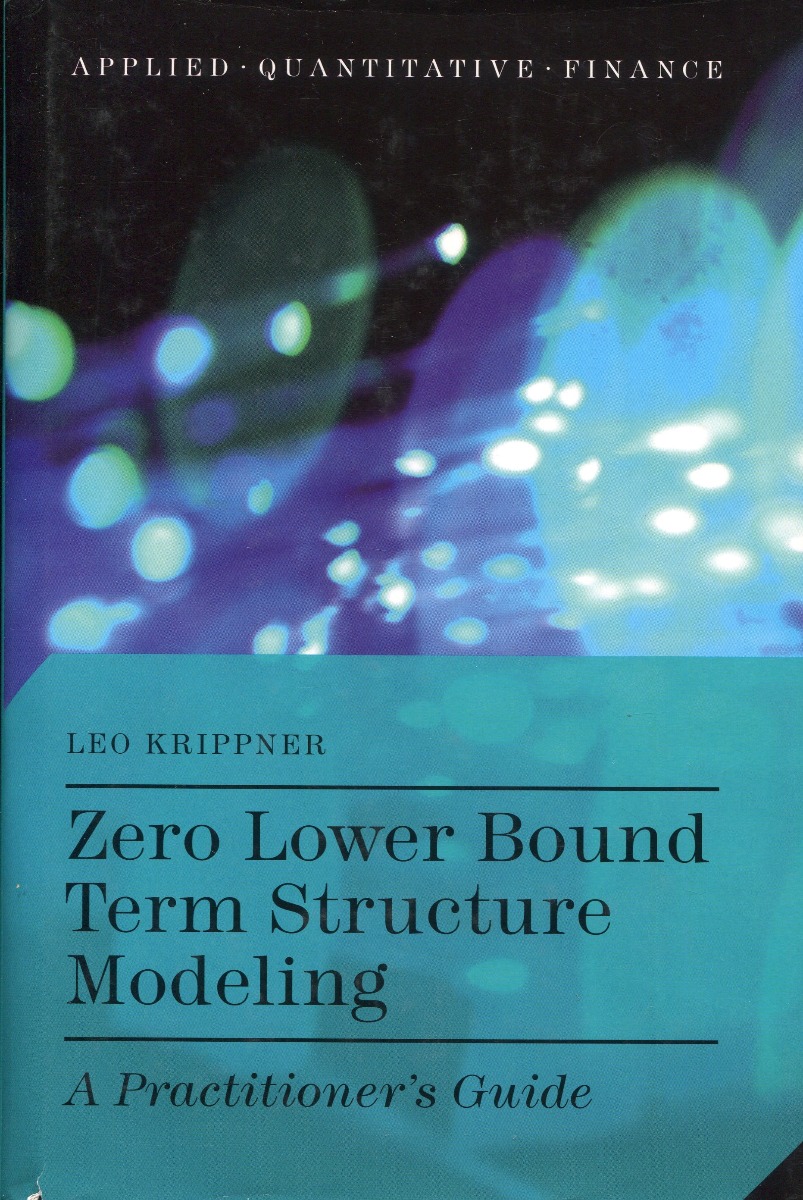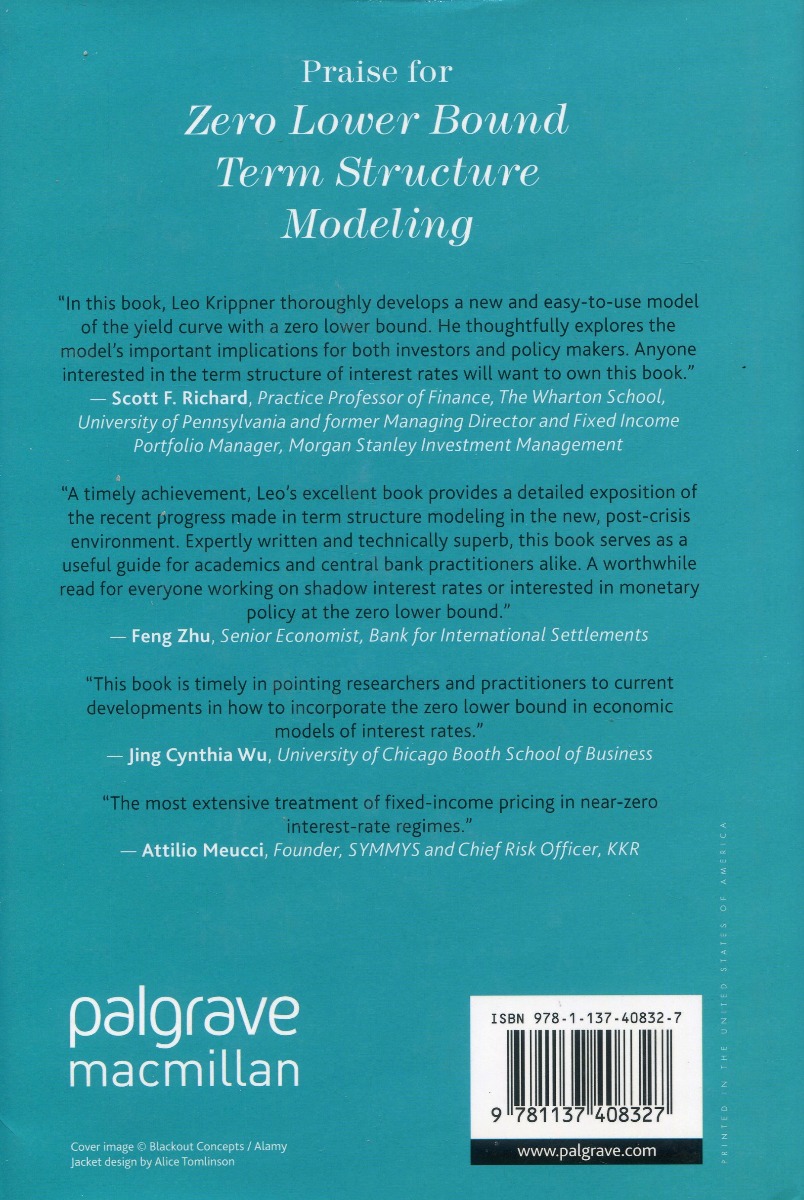Something unprecedented occurred in the wake of the 2008 global financial crisis. Interest rates in the world’s six largest economies-excluding China-settled at or near zero percent, with many other economies in the same position. This phenomenon, only previously (and recently) seen in Japan, is so rare that the behavior of such rates and their relationships with the macro-economy are uncharted terrain to most. In Zero Lower Bound Term Structure Modeling, author Leo Krippner provides a clear-cut and much-needed guidebook for navigating this environment of near-zero interest rates. He has created a comprehensive reference for state of the art zero lower bound (ZLB) term structure modeling. Incorporating his own research in the field, Krippner shows how these models may be applied in practice to monetary policy and financial market issues in the ZLB environment.
He begins with a straightforward introduction to the principles of standard term structure modeling and monetary policy, illustrating the complications introduced by ZLB conditions. Zero Lower Bound Term Structure Modeling then moves on to detail frameworks that realistically accommodate interest rates and bond prices constrained by the ZLB, including the estimation of these models. Krippner demonstrates how these models can be used to monitor the stance of unconventional monetary policy and manage fixed income portfolio risk. He also shows how they can be applied to macro-finance relationships and valuing bond options. Most importantly, this book demonstrates the ways in which standard term structure modeling can be seriously deficient in a ZLB environment and outlines how the frameworks Krippner introduces can fill the gap. Zero Lower Bound Term Structure Modeling arms readers with the necessary understanding and tools to make informed decisions about frameworks to use in the unique ZLB environment.








